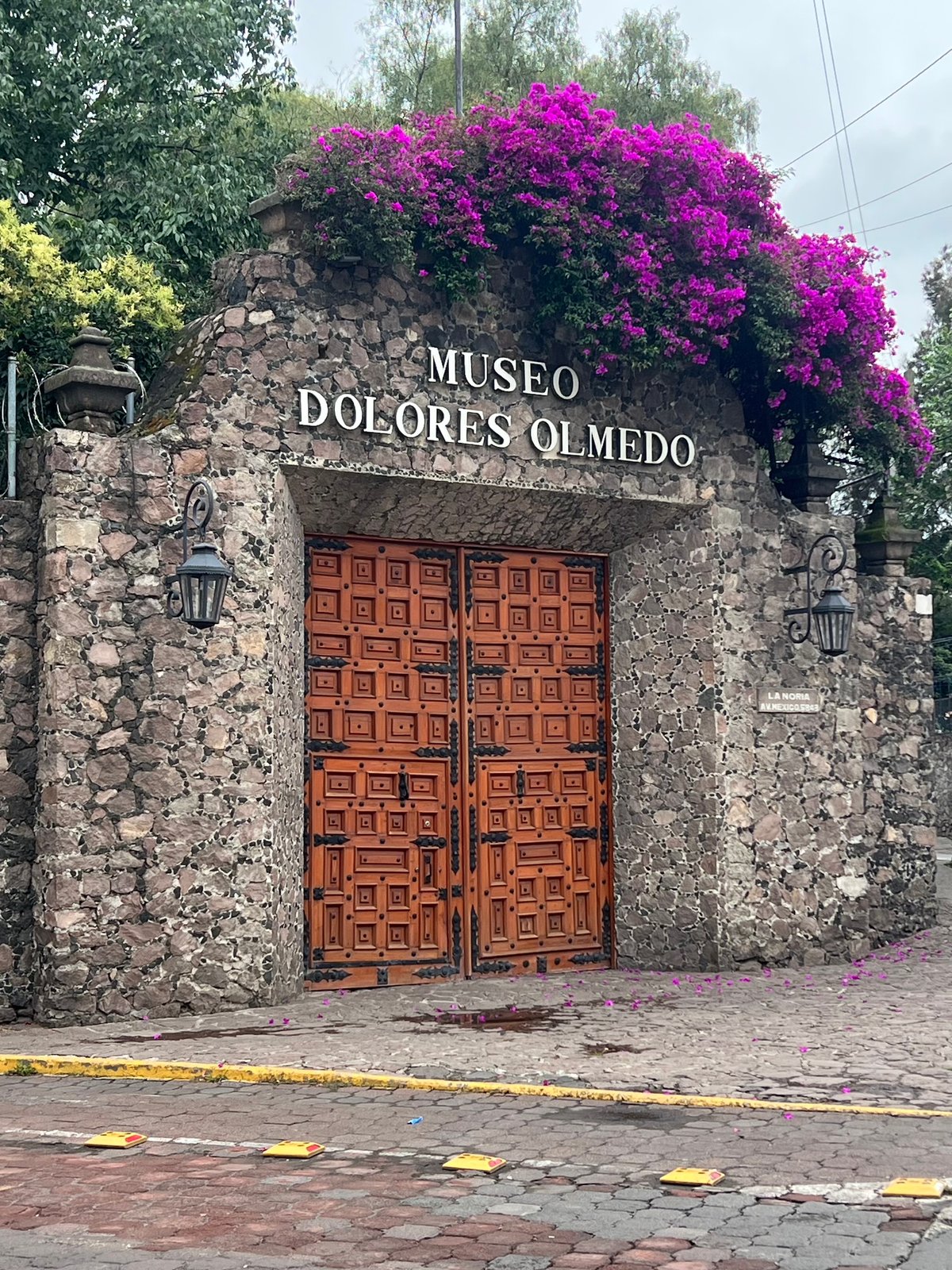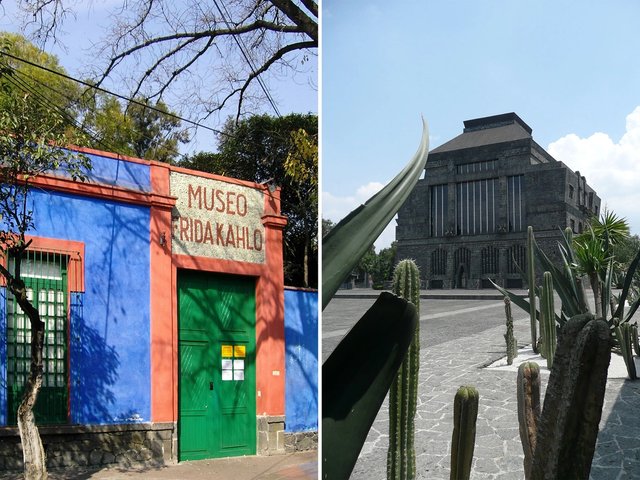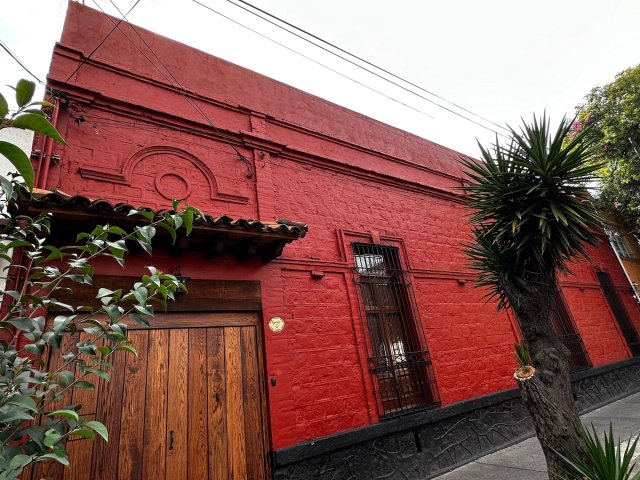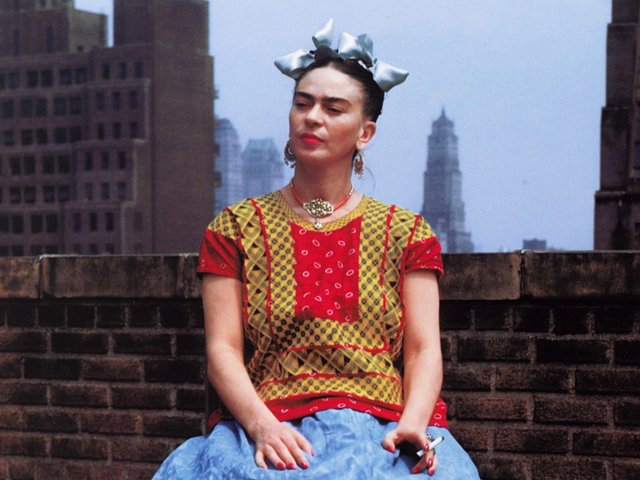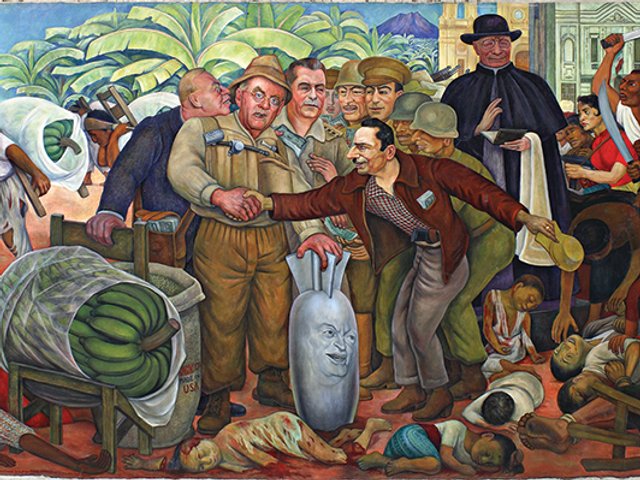Museo Dolores Olmedo, which owns the most significant collection of Frida Kahlo and Diego Rivera works, has announced that it will reopen in 2026. It has been closed since 2020, when it was shuttered due to the Covid-19 pandemic.
This news follows years of uncertainty about the future of the museum. Even now, questions remain as to whether its art collection will be fully displayed, as plans to relocate it to Chapultepec’s Parque Aztlán emerged in 2021—going against the wishes of its eponymous founder, who specified that the collection stay put.
The Mexican art collector Dolores Olmedo (1908-2002) founded the museum inside the 16th-century La Noria Hacienda in Xochimilco, Mexico City. The property is also known for its gardens, Xoloitzcuintli dogs and Day of the Dead altars.
A businesswoman and philanthropist, Olmedo was closely linked to Rivera, and the artist’s work and nationalist vision shaped her collecting practice. For decades, the influential and controversial patron led the governing body of a trust created by Rivera in 1955 to ensure that the collections of Kahlo’s Casa Azul and Rivera’s Museo Anahuacalli remain “for the people of Mexico”. (The trust is currently the subject of a separate controversy over works by Kahlo that are allegedly missing from its museums.)
In 1962, Olmedo bought and renovated La Noria, housing her extensive collection of archaeological artefacts, crafts and art there—including more than 140 Riveras and 25 Kahlos acquired directly from Rivera. In 1994, Olmedo converted the hacienda into a museum, led by a private trust overseen by a family-run governing body.
For more than 25 years, Museo Dolores Olmedo was an off-the-grid community hub that, alongside art, highlighted Olmedo’s world and Mexican traditions. First led by Olmedo’s son, Carlos Phillips Olmedo, it is now run by his daughter, Dolores.
In 2022, Dolores Phillips told the Spanish newspaper El País that a new 40-year loan of the collection to Aztlán—a $30m investment—would be an “extension” of La Noria. Many argue, however, that this move to relocate the collection contradicts Olmedo’s original vision and is part of an attempt to centralise heritage in the museum-filled Chapultepec. (Dolores Phillips did not respond to The Art Newspaper’s requests for comment.)
Escalating pressure
Pressure had already mounted, urging the museum for answers on its future, before the 4 July reopening announcement that also referenced a “four-year restoration, research, renovation and archive cataloguing”.
On 26 June, a panel of experts convened at Mexico City’s Casa Lamm cultural centre. Their discussions focused on reported “irregular” modifications made in 2020 to the museum trust’s documents, replacing the 2002 version that Olmedo had signed before her death (The Art Newspaper accessed these documents).
The group noted that the most concerning change was omitting the Mexican people as beneficiaries of the trust. Other modifications included switching banks from Nacional Financiera (Nafin) to CiBanco—now under investigation, leading to the return to the government-linked Nafin. The documents also specify that La Noria was established as the collection’s permanent site, allowing for only temporary loans of its works, which would help support the museum, together with a fund originally contributed by Mexico’s Ministry of Finance and Public Credit.
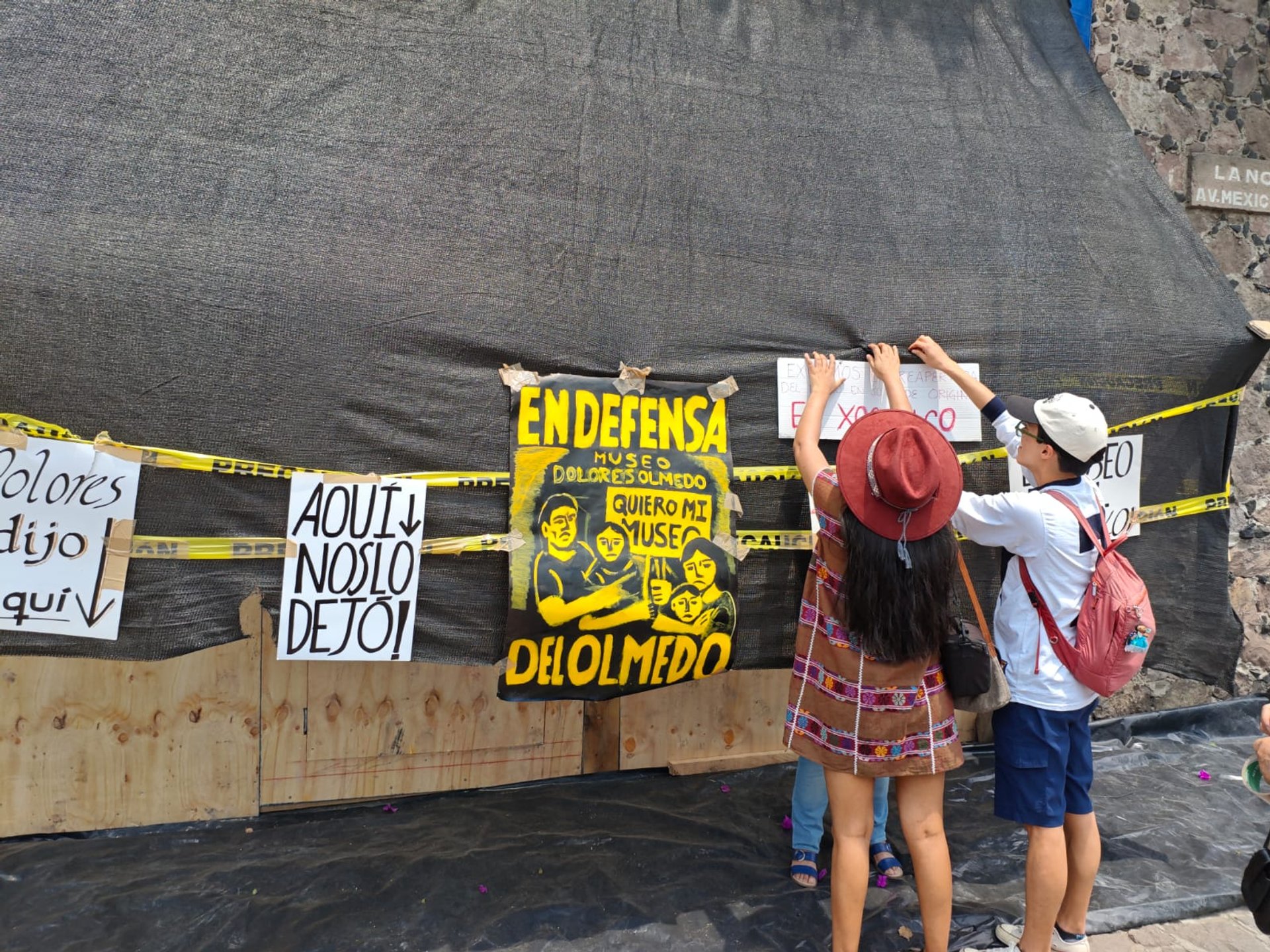
Protest in front of Museo Dolores Olmedo on 6 July Photo: Joel Figueroa Peña
“The museum receives a $450,000 fee for Kahlo and Rivera loans,” the cultural journalist Adriana Malvido said during the panel. She also quoted Olmedo’s words from a 1994 catalogue: “I want the Mexican people to know this heritage is non-transferable. It belongs only to them. It can never be extinguished or dismantled.”
On 4 July, panellists from the event joined the former leader of Casa Azul and Museo Anahuacalli, Hilda Trujillo Soto, in issuing a letter to Mexico’s Ministry of Culture. Signed by more than 90 cultural figures, the appeal reads, in part: “We share concern over the closure and fragmentation of the museum’s holdings. This affects not only Xochimilco’s community but also cultural rights.” It further notes that Olmedo’s collection not only includes Kahlo and Rivera works, declared National Artistic Monuments, but also pre-Hispanic pieces considered national property under a 1972 law.
Mexico’s Institute of Fine Arts and Literature, which oversees part of the collection’s handling, had previously stated that it “has not received notification of any relocation” and confirmed the works remain “properly conserved”.
Local Xochimilco residents soon joined the conversation. On 6 July, they organised a protest in front of Museo Dolores Olmedo. “Here she left it” and “Dolores said here”, their placards read. “Olmedo was a respected member and benefactor of Xochimilco, and the museum was a community enclave,” says Juan González, a member of a new 150-person citizen collective. “More actions will follow.”
La Noria’s future
Museo Dolores Olmedo’s reopening announcement raised hope for the future of its collection, but some argue that it lacks clarity. “The trust is starting to give opening signals, but that brings no guarantees,” says Bolfy Cottom, a cultural legislation expert who participated in the 26 June panel. “The museum’s reopening is only one part of the problem.”
La Noria’s planned “new museological configuration” will debut sometime next year. Starting in January, part of its collection will be exhibited in Frida: The Making of an Icon at the Museum of Fine Arts, Houston, before the show travels to Tate Modern in London. Meanwhile, Aztlán’s website states that the Olmedo museum is opening there soon. (Aztlán’s director, Sergio Haua, did not respond to requests for comment.)
The debacle is part of a larger debate concerning Mexican heritage, particularly related to private trusts overseeing collections intended to be for the people, and locals are increasingly demanding answers. “It is encouraging to see a response from intellectuals and the community,” Trujillo says. “Hopefully, this will lead to concrete actions.”
On 8 July, Museo Dolores Olmedo issued an official response: “We vigorously oppose the accusations regarding the temporary closure of the museum and the alleged violation of our founder’s will. We reiterate the museum’s temporary closure is due to restoration and modernisation.” The statement also describes accusations in the 4 July letter as “unfounded”, further claiming that some of its signatures were not confirmed—Trujillo, Malvido and Cottom strongly deny this.
Perhaps referencing Aztlán, though it is not named outright, the response continues: “Any extension or collaboration with other cultural spaces furthers the trust’s mission to promote heritage, without compromising the collection’s integrity or ownership.”


